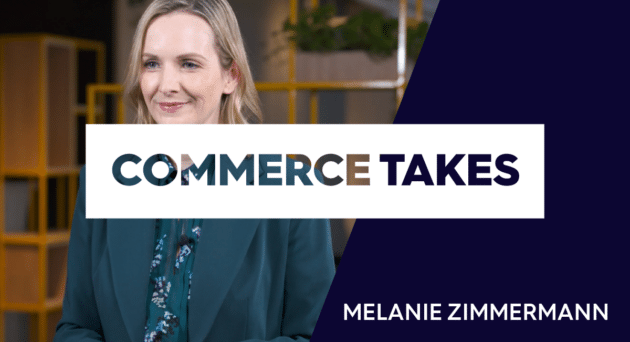With a growing focus on consumer privacy, evolving legislation, and the imminent demise of third-party cookies, many digital advertising players are turning towards first-party data.
But what exactly is first-party data? Should you build a strategy around it? And can it really provide a scalable alternative for programmatic trading in the post-cookie era?
You have questions, and we have answers.
What is first-party data?
First-party data is information that you collect directly from your audience, your customers or website visitors, as they interact with your digital properties.
Simply put, first-party data is pure gold.
When you collect data directly from your audience, you’re getting the most accurate and reliable data points. And those insights aren’t diluted or secondhand. If you’ll forgive the mixed metaphor, it’s like spring water—fresh, pure, and straight from the source.
Where you get your first-party data depends on your role in the digital space (brand, DTC, publisher, etc.) but common sources include:
- Website analytics. The data you gather from users as they navigate your website, such as pages visited, dwell time, and any specific actions taken (like adding a product to cart).
- Order history. Information about specific purchases customers have made, how often they buy, and their average spend.
- Subscription data. Details from users who sign up for your newsletters, including their email address and contact preferences.
- Mobile app analytics. Insights about how users interact with your mobile app, if you have one, from how often they open the app to the specific features they use.
Because you collect this data directly, it’s highly reliable and totally unique to your business. Not only that, but it also opens the door to first-party data advertising.
But why does this matter? Well, with third-party cookies on the way out due to privacy concerns and new regulations, advertisers won’t be able to track user behavior across the web as they have in the past. Instead, brands will need to rely more on their own data to understand and reach their audiences.
One of the big upsides of using first-party data for advertising is that you’re reaching out to customers who actually want to hear from you—and that can make a big difference to your outcomes.
To learn more about how Criteo is leveraging first-party data to solve addressability, check out our dedicated Addressability Hub.
How to collect first-party data
Collecting first-party data effectively hinges on a core principle which will be familiar to all digital marketers: the value exchange.
In short, this means that users are much more willing to share their information when there’s something in it for them. Whether that’s personalized experiences, exclusive content, or special offers, the key is to incentivize them to share data. Quid pro quo.
For brands and advertisers, this might look like:
- Discounts on digital storefronts. Exclusive discounts can entice users to share their contact details and shopping preferences.
- Loyalty programs. Rewarding customers with points, discounts, or special deals in exchange for data on their purchase history and preferences.
- Email campaigns. Encouraging users to sign up for newsletters with exclusive offers helps gather email address and interaction data.
On the other side of the ecosystem, for publishers, the approach might be:
- Subscription or gated content models. Offering premium content via subscriptions (a.k.a. the “paywall”) allows you to gather user data at sign-up then analyze how they engage with your gated content over time.
- Content strategy and analytics. Creating engaging and relevant content encourages users to spend more time on your site, giving you the chance to leverage web analytics to better understand your audience.
- Email newsletter metrics. Collecting email addresses through newsletter sign-ups enables you to track open rates, click-through rates, and engagement over time.
By focusing on the value exchange, brands, advertisers, and publishers can offer users a compelling reason to share their data—ultimately building a more robust first-party data strategy.
First-party vs. second-party vs. third-party data
In digital advertising, understanding the differences between first-party, second-party, and third-party data is crucial.
We’re here to talk about first-party data, of course, but it’ll make a lot more sense with a bit of context—so let’s break down a few other terms you may have heard thrown around the industry.
- First-party data. This is data that’s all yours. You collect it directly from your audience—with their consent—through your website, apps, or other owned channels. It’s reliable, accurate, and owned entirely by you, but its scale will be limited to your audience size.
- Second-party data. This is someone else’s first-party data that you’d usually source via a partnership with another company. Assuming you’re working with a trusted partner, second-party data is a reliable means of unlocking additional reach and scale beyond your own first-party data.
- Third-party data. Collected by organizations with no direct relationship to your audience (usually known as data owners) third-party data is aggregated from multiple sources then sold to advertisers. It offers the greatest scale but is less reliable and faces growing privacy regulations.
That’s how things shake out for data, but cookies are in the mix here, too—and they’re not one and the same. On top of that, there’s also a distinction to be made between first-party cookies and third-party cookies. Need some cookie clarity? Check out our dedicated blog posts, What’s the Difference Between First and Third-Party Cookies?, for the full picture.
What about “zero-party” data?
Zero-party data is a relative newcomer to the data party in digital advertising.
Unlike first-party data, which is collected through user interactions, zero-party data is information that customers intentionally share with you. It’s this proactive step that makes the difference.
Examples of zero-party data include:
- Surveys, polls, and quizzes. Users offer their preferences and opinions, which can be used to enrich your data.
- Account user preferences. Whether brand or publisher side, you can provide account settings so users can tell you about themselves.
- Interactive content. Engaging tools like interactive infographics or calculators are a great way to encourage users to voluntarily share insights directly with you.
Zero-party data is laser-accurate because customers share it with you directly, making it that much easier to tailor your marketing. It also enables better personalization, builds trust, and aligns with privacy regulations to lower compliance risks.
Even better, it does all this with the express consent of the user.
The benefits of a first-party data strategy
Now that you have a solid understanding of what first-party data is and how to collect it, let’s consider the ‘why’.
Here are just a few reasons you should consider building a first-party data strategy:
Targeting at its best. With first-party audience data, you can tailor your digital campaigns to fit your customers like a glove. You know their preferences, behaviors, and purchase history, allowing you to create highly targeted campaigns. This beats the “spray and pray” approach of third-party data, which often leads to disappointing results.
Getting ahead in a cookieless world. As we bid farewell to the third-party cookie, first-party data is becoming more critical than ever. By leveraging your own data for targeting, you’re not relying on external sources that are becoming less available (and less reliable).
Better Return On Ad Spend. Investing in a first-party data strategy can lead to a higher ROAS. How? Because you’re targeting the right people, with the right messages, at the right time. This precision minimizes wasted ad spend and maximizes the effectiveness of your campaigns. Even better, you’ll save money by relying less on third-party data providers.
Compliance and trust. In an age where data privacy is a hot topic, using first-party data helps you stay compliant with regulations like GDPR and CCPA. It also builds trust with your audience, as they’re more comfortable sharing their information with you directly, knowing it will be used responsibly.
The challenges of first-party data
While first-party data offers many benefits, it’s not without its challenges.
Scale and reach limitations. First-party data comes from direct interactions with your users, but that can limit your advertising’s reach if your audience is on the smaller side. Solutions like Criteo’s first-party media network allow you to mitigate these limitations, and enhance your first-party data, in a privacy-safe way.
Data collection and integration. Gathering first-party data isn’t a walk in the park. It involves pulling data from various sources—websites, apps, and even in-store systems—to ensure it all meshes into a single, interoperable format.
Privacy and consent management. With data privacy in the spotlight, compliance with regulations like GDPR and CCPA is crucial. Managing user consent transparently and carefully is essential, and it can get complex as regulations evolve. This calls for solutions like Consent Management Platforms (CMPs) integrated with your web properties.
First-party data activation. Putting first-party data to work can be tricky if you’re going it alone, so working with a partner (like us!) that can help rapidly onboard and activate your data is a must.
How to build a first-party data strategy (in 9 steps)
Now that you’re familiar with the basics of first-party data—and why building a strategy around it matters—let’s get a bit more practical.
- Decide on your end goal. What do you want to achieve? Better personalization, improved ROI, or stronger customer relationships? Getting clear goals down in black and white will help steer your strategy.
- Get internal buy-in. To make a first-party data strategy really work, it needs support from across the organization. Be sure to educate key stakeholders on the benefits and potential returns of a first-party data strategy.
- Identify data sources. Figure out where your data will come from—website, mobile app, CRM, email campaigns, in-store interactions, and so on. The more sources you can find, the richer your data will be.
- Ensure data quality. High-quality data is a must. Implement data hygiene best practices and regularly clean and update your data to keep it accurate. It’s also smart to verify data—like running email confirmations—when you collect it for the first time.
- Focus on privacy and compliance. It’s vital that you collect and use data in line with privacy regulations like GDPR and CCPA, so ensure you’re transparent about consent and data use. Consent Management Platforms (CMPs) are a solid way to handle user consent clearly and compliantly.
- Invest in the right technology. You’ll want to choose tools that can collect, integrate, and analyze your data effectively. Customer Data Platforms (CDPs) are ideal for centralizing and managing your stores of first-party data.
- Analyze and segment your data. Use analytics to gain insights. Segment your audience based on behavior, preferences, and demographics to help you create targeted campaigns once activation begins.
- Activate your data. It’s game time. Upload your first-party data directly to your vendor partners for matching, or onboard it via a Data Management Platform (DMP), to refine targeting and expand your reach across channels.
- Rinse and repeat. Don’t forget: there’s always more data to capture. Keep evolving your strategy and regularly review performance, test new approaches, and refine your activation based on what works best for you.
First-party data strategy: 3 essential takeaways
We’ve covered a lot of ground in this article, so if you’re short on time, here are the 3 essential lessons you should take away from this topic:
- First-party data (could be) your golden ticket. Because it’s so reliable, accurate, and unique to your business, it can be a powerful tool for personalized marketing and targeting. In a world without the third-party cookie? That goes double.
- Collecting first-party data is all about the value exchange. Your users will always be more willing to share their information when there’s something in it for them. Discounts, loyalty programs, exclusive content, or gated premium content can incentivize users to provide their data, so everybody wins.
- It’s never too late to start building a first-party data strategy. With precise targeting, better ROAS, and improved privacy compliance, a first-party data strategy is almost essential. But it also calls for strict data quality control, privacy considerations, and technical integrations—making the right technology and partnerships crucial.






















